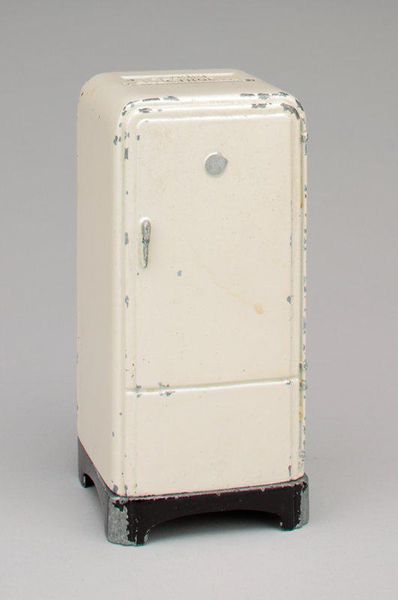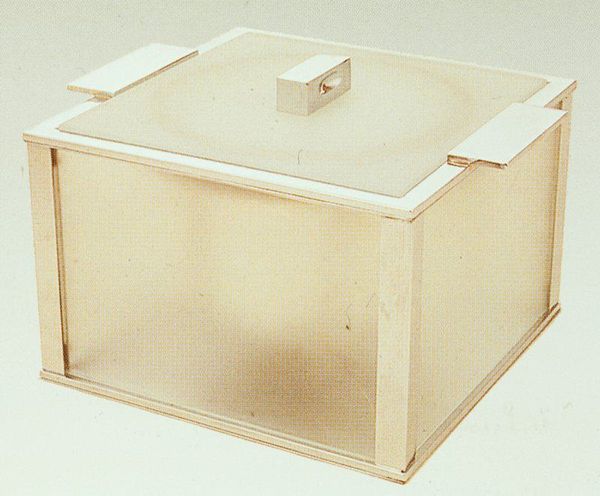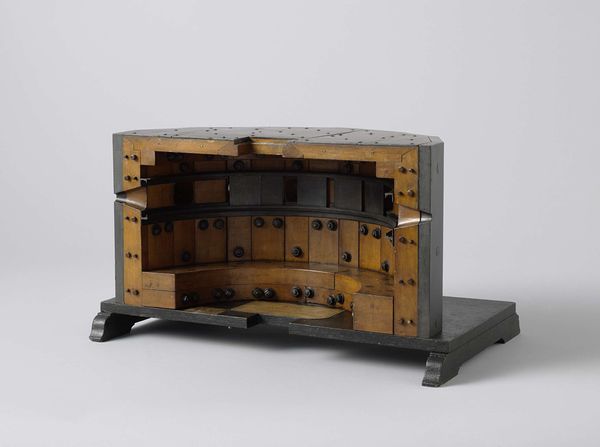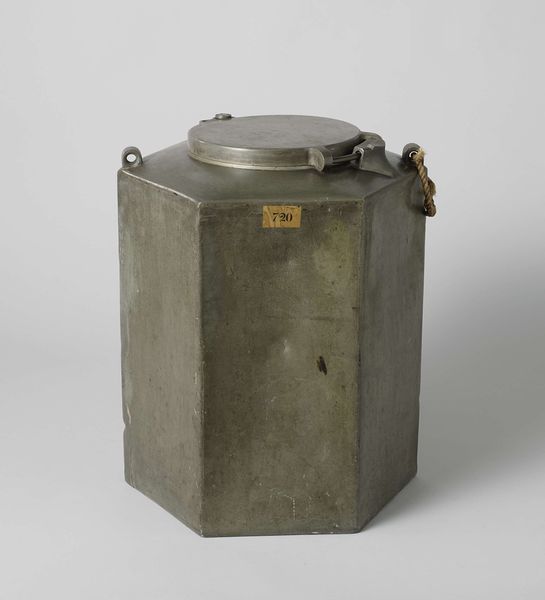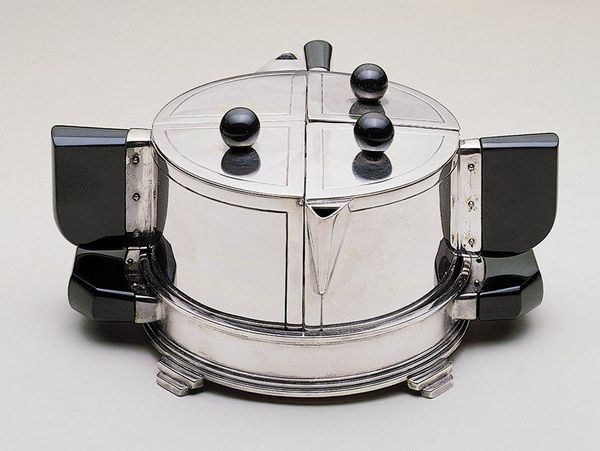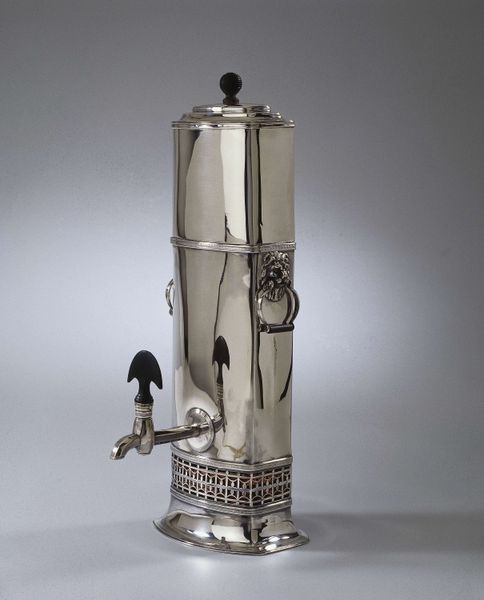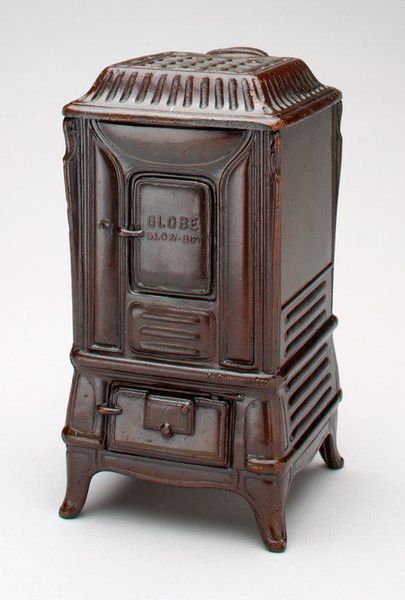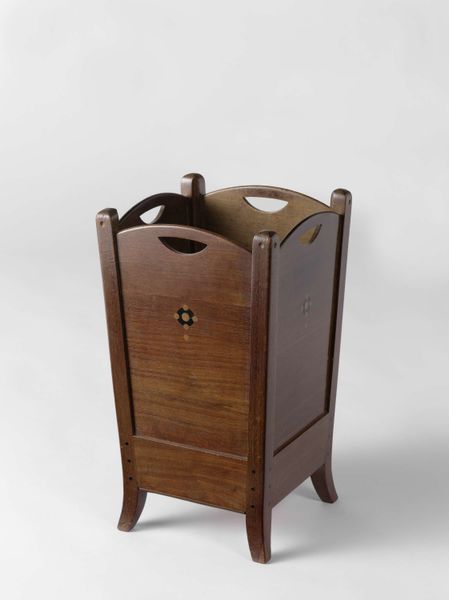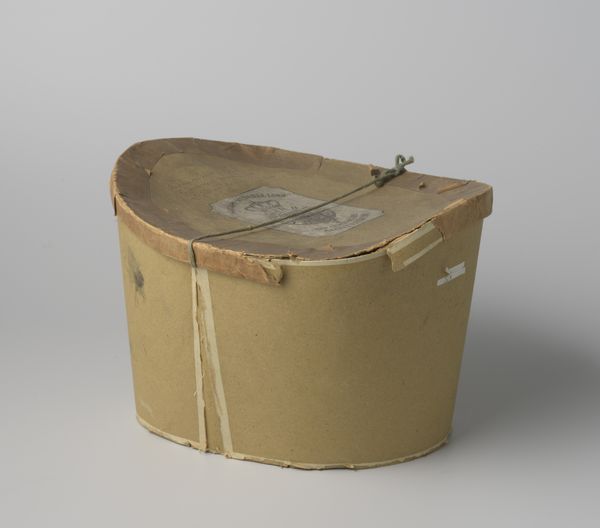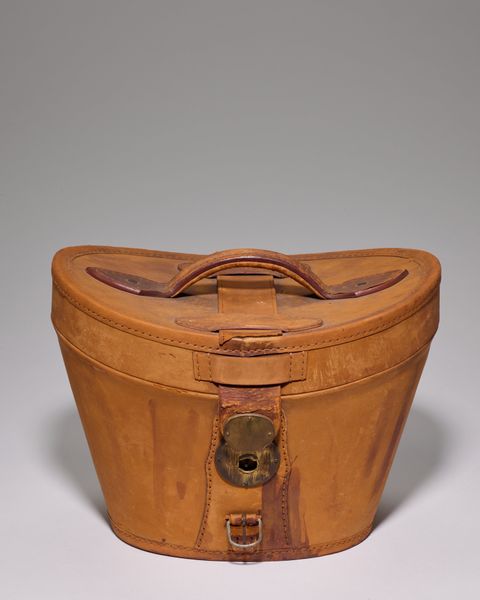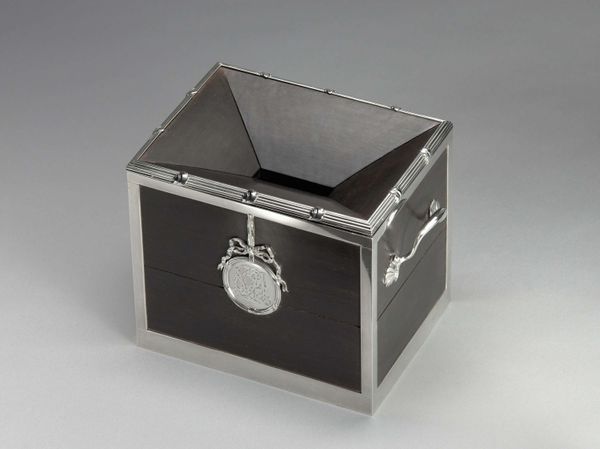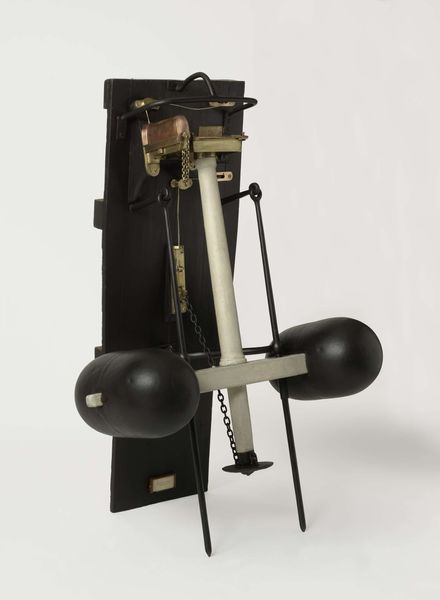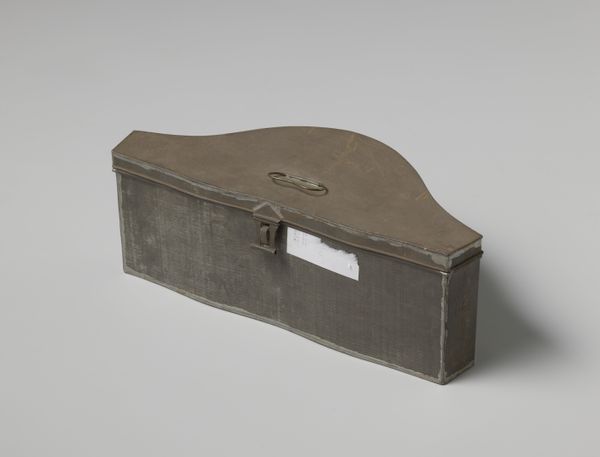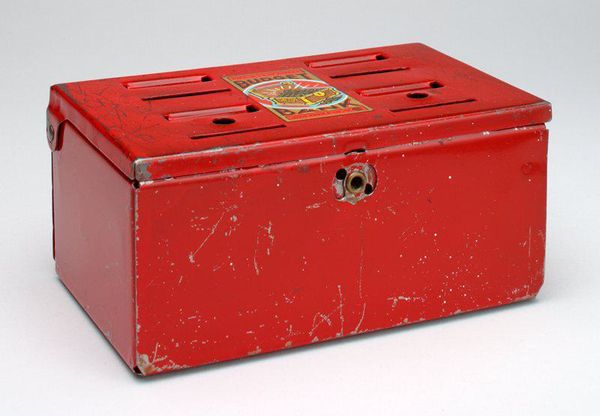
Dimensions: object: 889 x 762 x 660 mm
Copyright: © Bill Woodrow | CC-BY-NC-ND 4.0 DEED, Photo: Tate
Curator: Bill Woodrow's "Twin-Tub with Guitar" presents us with a repurposed washing machine transformed into something unexpected. What springs to mind for you? Editor: Immediately, I see the stark contrast—domesticity versus art, the mundane versus creative expression. There's a tension in taking something so functionally gendered, related to labor, and turning it into a symbol of liberation, of music. Curator: It’s fascinating how Woodrow extracts these forms from the object itself. The guitar emerging from the washing machine carries potent symbolic weight. A new identity is forged from the familiar. Editor: Exactly. By cutting away, Woodrow isn't just creating a sculpture; he’s making a statement about consumer culture and the potential for transformation within it. The guitar becomes almost a defiant act, a re-imagining of purpose. Curator: The way he merges high and low art raises questions of value. Is he elevating the everyday, or critiquing the art world's detachment? Editor: Perhaps both. It’s a commentary on what we deem worthy of attention and creative energy. For me, it encourages us to reconsider the narratives embedded in everyday objects. Curator: An intriguing intersection of symbols and social commentary. Editor: Absolutely, a powerful fusion of form and meaning.
Comments
tate 7 months ago
⋮
http://www.tate.org.uk/art/artworks/woodrow-twin-tub-with-guitar-t03354
Join the conversation
Join millions of artists and users on Artera today and experience the ultimate creative platform.
tate 7 months ago
⋮
Bill Woodrow’s raw materials are familiar, domestic objects collected from the streets and junk yards in his neighbourhood. In the early 1980s he began giving them new meanings by peeling back their outer casing to form new objects. Here he has cut a sculpture of an electric guitar from a discarded Hotpoint washing machine. This odd conjunction brings together two symbols of Western consumerism. Woodrow explained ‘The guitar was a pop icon and the washing machine was an everyday, domestic item. So it was bringing the two things together like a slice of life’. Gallery label, August 2004
